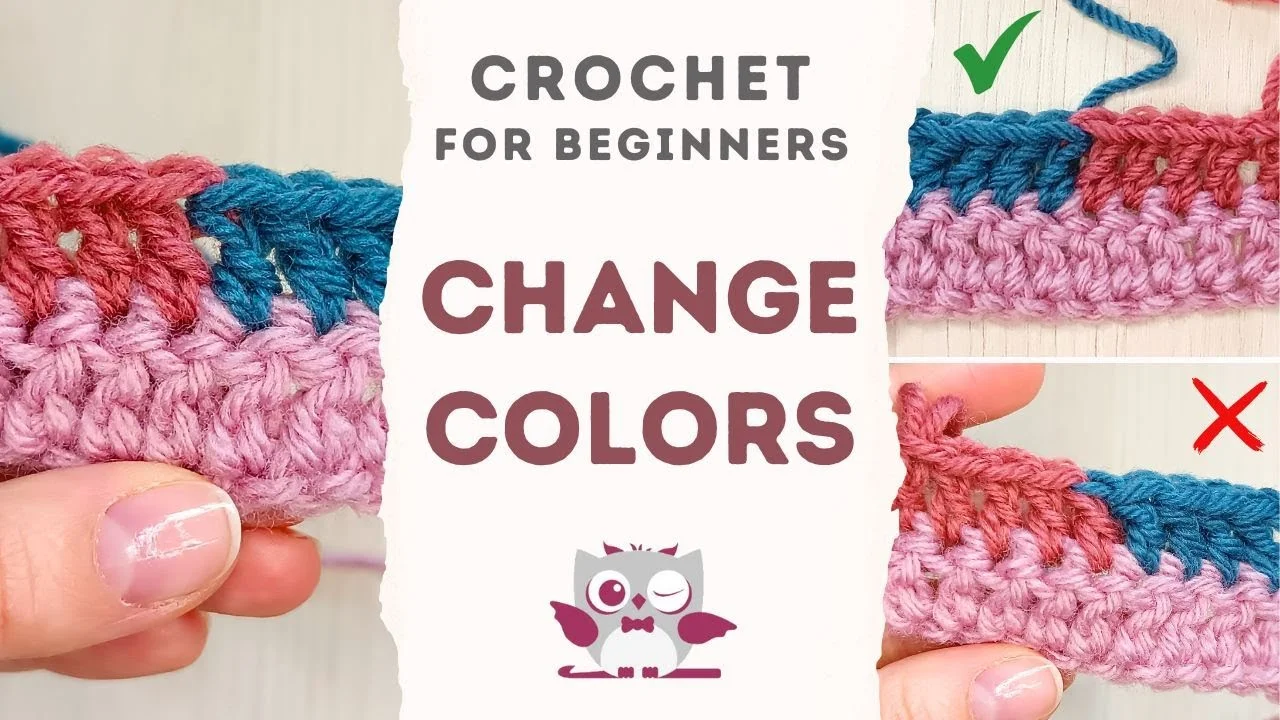In this article:
If you are new to crochet and want to learn how to crochet in more than one color, look no further. How many one-color crochet products do you ever see? Crochet should be colorful, exciting, and adventurous.
Learning how to change colors in crochet may seem daunting, but in fact it’s easy and fun. You will soon be able to change colors in crochet at the beginning, in the middle, and end of rows, as well as in rounds.
Is changing colors easy to learn?
Yes, because it’s very straightforward. When crocheting with colors, you can choose between two methods. Either carry your yarn up the side of your work or cut it and weave in the ends later. Just remember to leave a long tail of yarn if you are cutting between color changes.
When following a pattern, you may encounter these types of instructions:
- Written Instructions – patterns often specify the exact stitch or row where a color change should occur. Crochet patterns will usually label different colors using letters e.g. A, B, C to distinguish which color to use when.
- Color Charts/Graphs – visual guides that show the design layout, often used in C2C, mosaic, tapestry, and intarsia crochet.
- Symbols – some patterns use specific symbols to denote color changes, making it easier to follow along visually.
How to change colors in crochet
It may come as a surprise, but the technique for changing color when crocheting is always the same. Whichever stitch you work with, including single crochet stitches, half double, double, or treble crochet, requires the same steps.
Video tutorial
Creating color changes when working flat
This method works in the same way whether you want to change color at the end of a row or change colors in the middle of a row.
Changing colors at the beginning of a row is basically the same thing.
To change the yarn color when crocheting, choose where you want to insert your new yarn color.
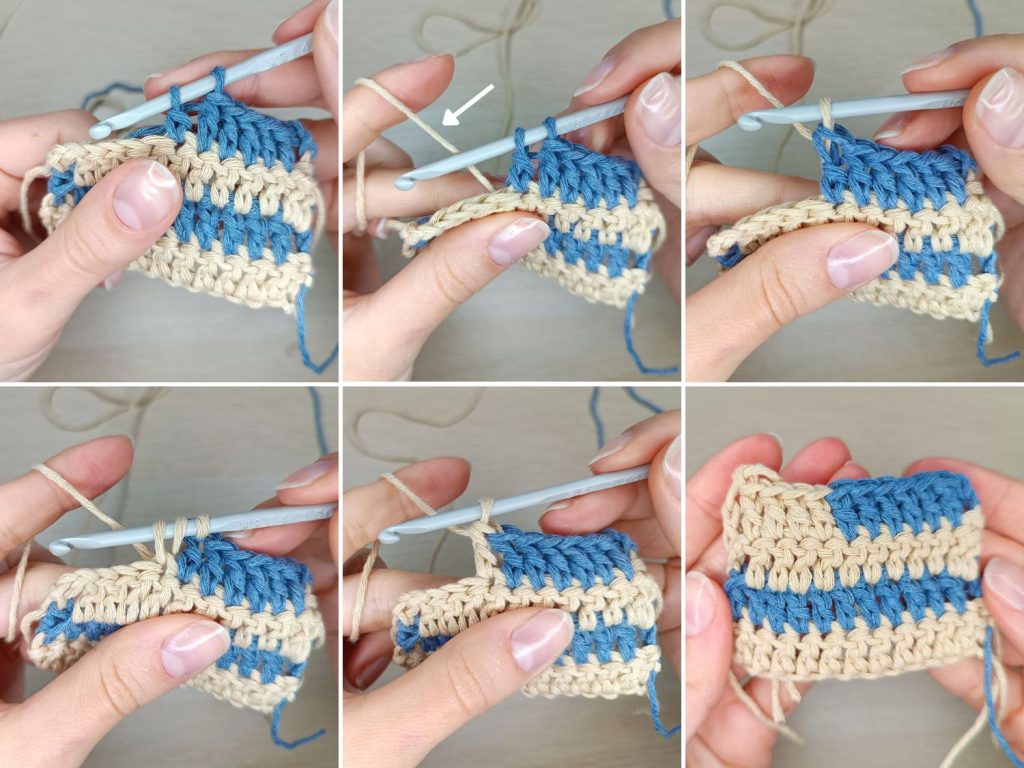
- Stop crocheting when you have the last two loops of your old yarn color on your hook.
- Pick up the new colored yarn, while holding the old one in check.
- Grab the new yarn with your crochet hook and finish the stitch.
- Continue crocheting normally with the new color.
Below you can see the wrong way (left) and the right way (right) of changing colors.
- Left: The stitch was finished with blue yarn, so the color ‘bleeds’ into the next stitch.
- Right: We stopped with two last loops on the hook and finished the stitch with pink yarn.
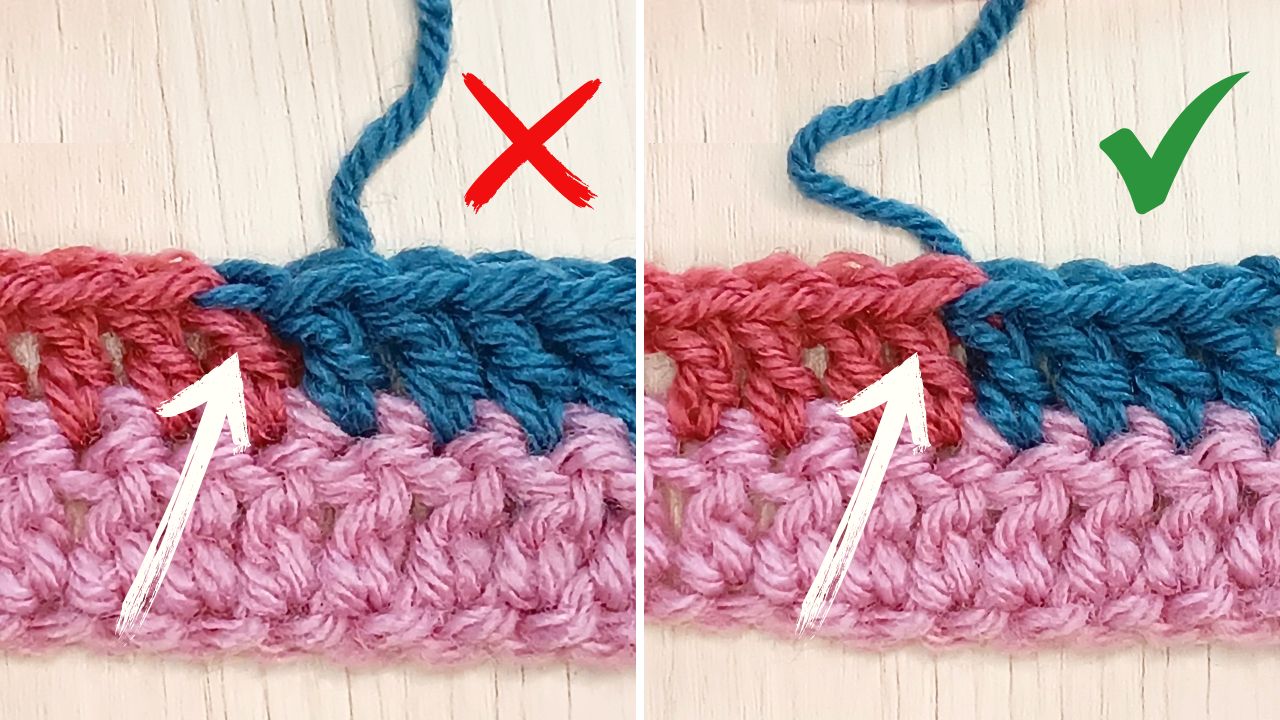
Changing colors in double crochet and other stitches
Essentially, changing colors in double crochet is the same as when using single crochet. You will have 2 loops on your hook when you stop crocheting at the end of your row.
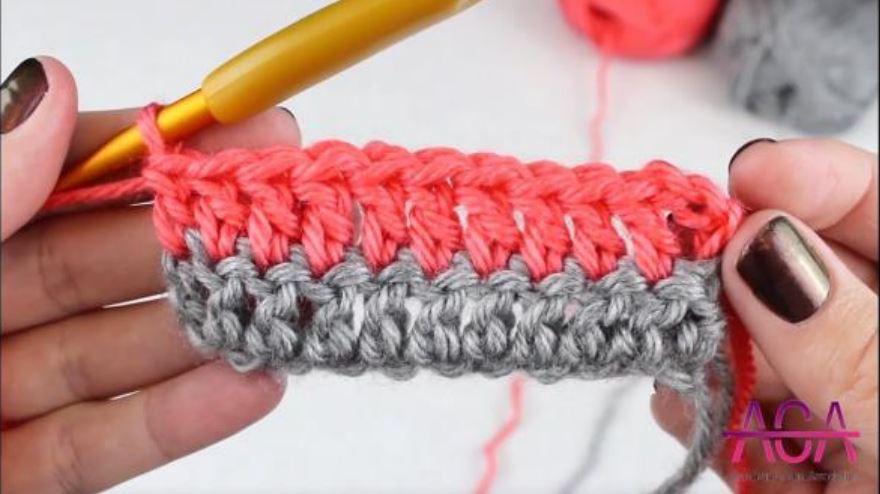
When using half-double crochet, things are slightly different. You will use color B to pull through the last 3 loops on your crochet hook instead of 2.
Everything else in the technique remains the same.
Changing colors when creating Granny Squares
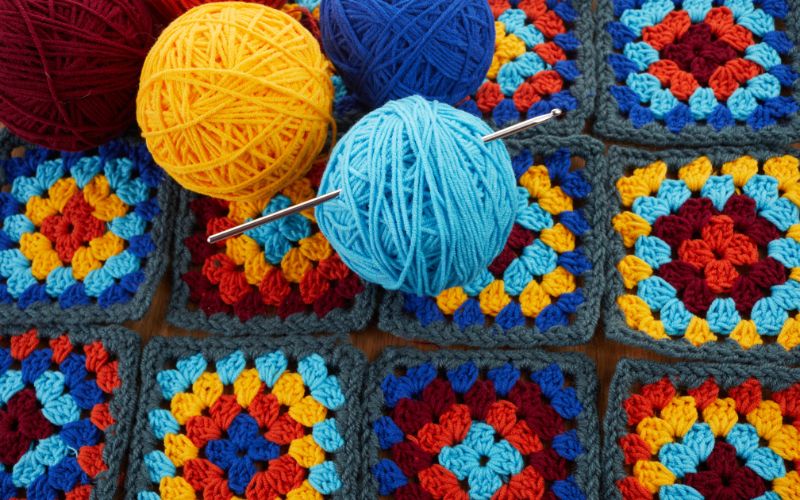
Granny squares are really popular with crocheters, so it is essential you know how to change colors when creating them.
We usually work each round of a granny square in a different color with patterns instructing you to change color in a corner space.
To change color when creating a granny square, complete your first round and close it with a slip stitch. Cut the yarn leaving a yarn tail of a few inches to weave in later. With your new color, create a slip knot and place it on your hook.

Now insert your hook into one of the corner spaces, and attach a slip stitch to the square. You can continue crocheting your granny square. You can also start with a standing stitch if you are familiar with the technique.
Changing color when crocheting in the round
When you come to the end of a round and need to change color, finish off your last round in your first color. To join your new color, use a slip stitch into the first stitch of the last row. Pull the yarn of the first color until the loop disappears. This will create a seamless join of the two colors.
Make a turning chain in your new color and continue crocheting.
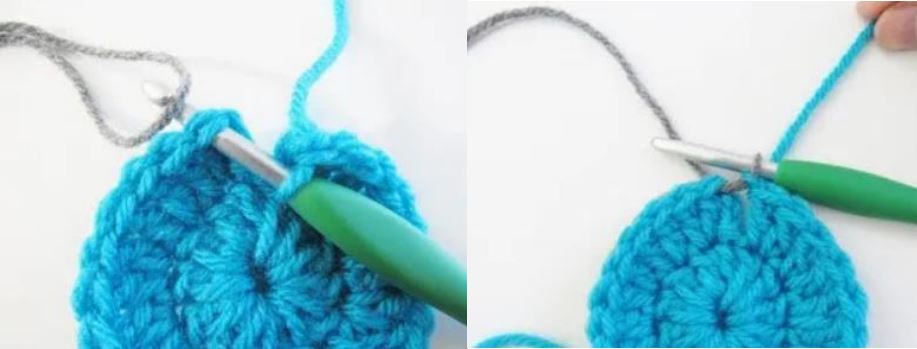
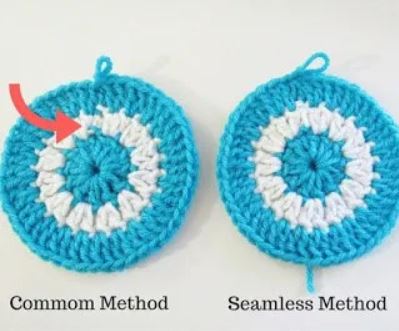
How to change color when creating amigurumi
Most amigurumi patterns use single crochet and work in spiral rounds. You can use the technique above to change colors when creating cute crochet toys.
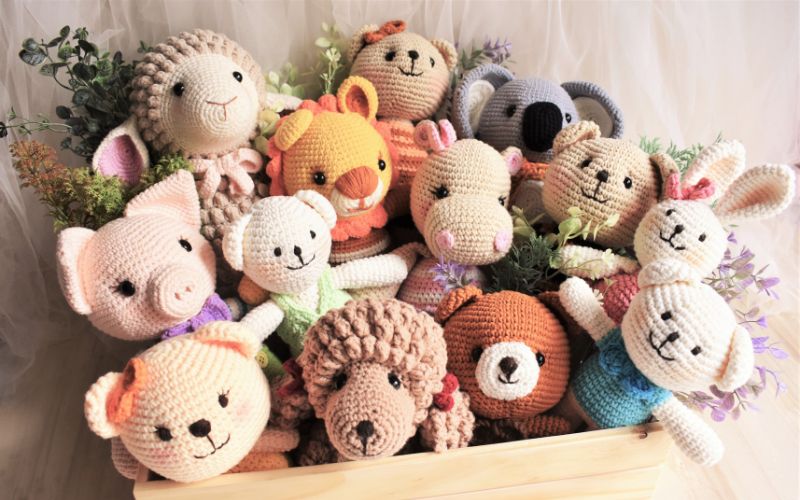
There is a way to create a smoother transition between colors, so it looks seamless and clean:
- Add the new color before you pull the last two loops through the last stitch.
- Make your next stitch a slip stitch instead of a single crochet.
- Continue crocheting, and when you return to the slip stitch you just created, treat it as a regular stitch and crochet it as normal.
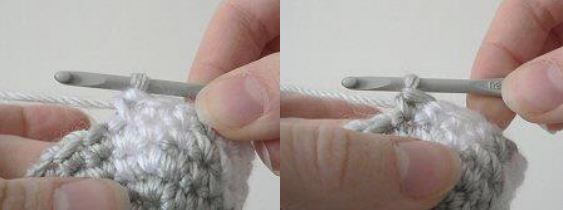
Carrying yarn while changing colors
One of the most important skills in colorwork is managing multiple yarns and yarn tails.
Cut and tie the yarn tails
Changing color in crochet will leave yarn tails to weave in. Make sure to leave a few inches so that you can weave in the ends later to secure your work in place.
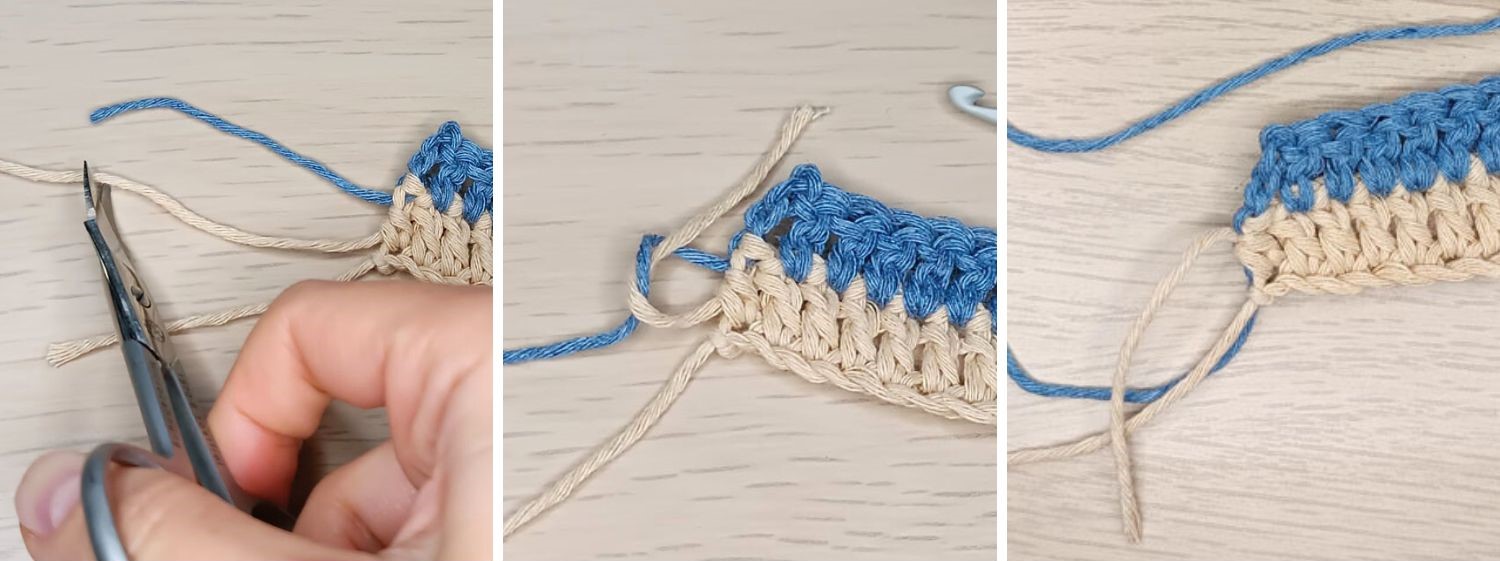
You can choose to do this as you go, but most people prefer weaving in the ends after they have finished their project.
Carrying the yarn while changing colors
There are two ways of carrying the yarn:
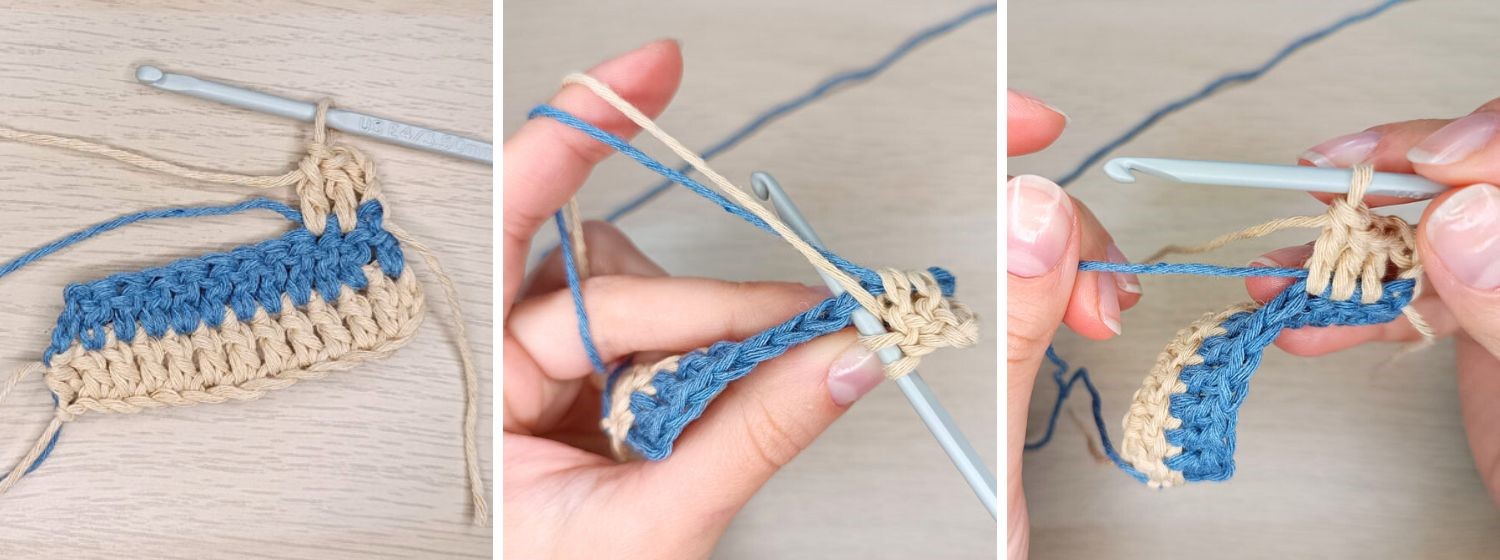
- Crochet over the unused color, hiding it inside the stitch, as shown above.
- Carry the yarn along the side, changing it whenever you reach the end of the row. This method might require adding a border to hide the edges.
- Leave the tails hanging on the sides and turn them into colorful tassels afterward.
How to weave in ends when changing colors in crochet
Weaving in ends is crucial if you work with many colors at once. Tie the yarn ends tightly and weave the tails with a tapestry needle.
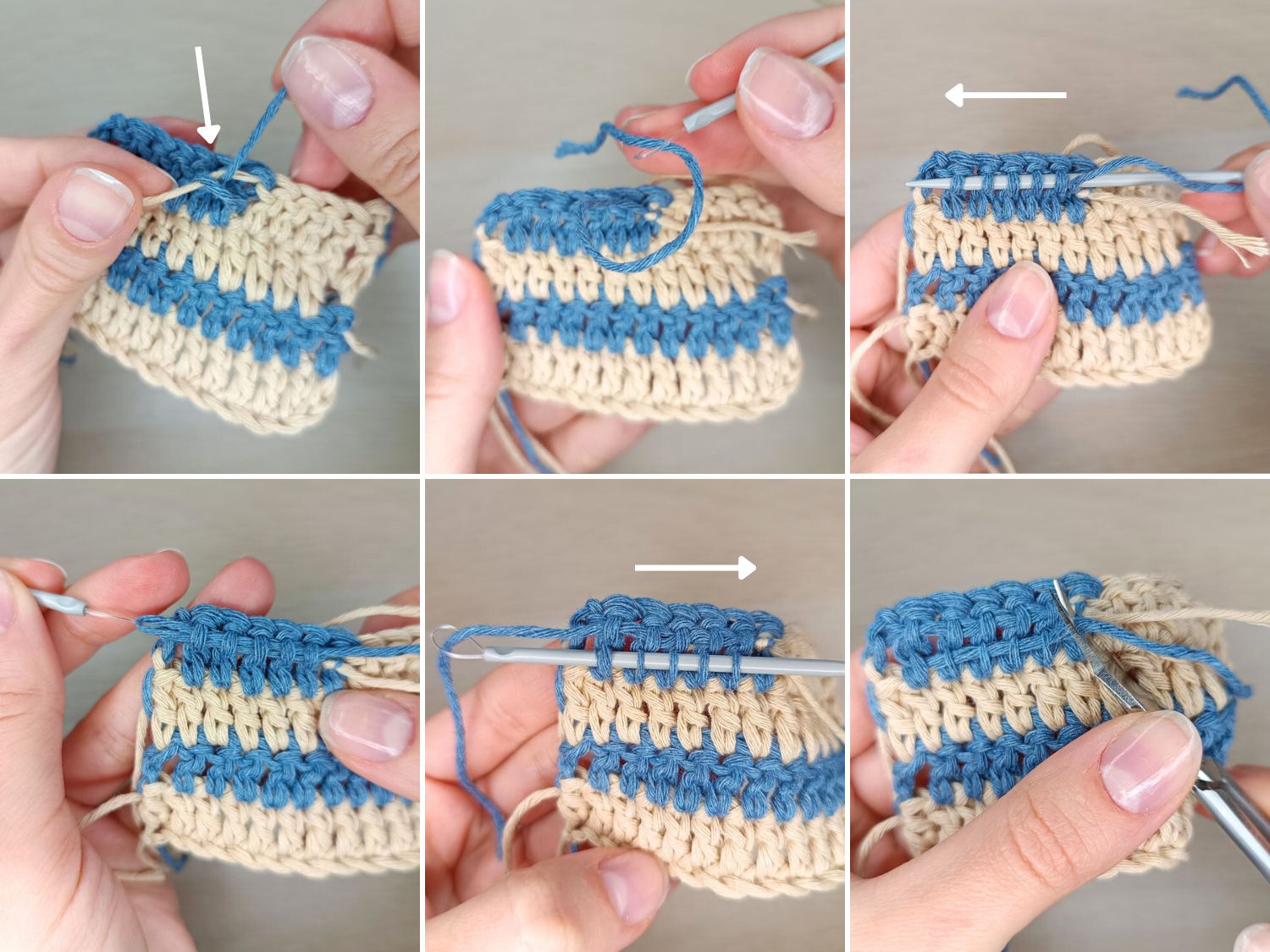
Advanced Techniques
There are some advanced ways of using colors, perfect for ambitious crocheters.
- Creating stripes and patterns – Ideal for simple, repeating designs and easy color changes at the row ends.
- Intarsia color changes – Best for large, solid color blocks without carrying yarn across the back.
- Fair Isle color changes – Suitable for intricate patterns with two colors per row, with careful management of yarn floats.
- Tapestry crochet – Excellent for detailed and multi-colored designs, carrying all colors throughout the work for a smooth finish.
- Standing stitch – instead of finishing the last stitch with a new color, we can make a standing stitch with the new yarn.
Common mistakes and how to fix them
Mistakes are unavoidable, so let’s see how to fix the most common ones.
- Uneven tension – practice is the best way to make your stitches nice and even. However, checking your stitches and adjusting the hook size will help. Blocking will also help even out minor tension issues.
- Visible gaps – switch the yarns and twist them together to close gaps and create seamless transitions. This method is essential if you work with standing stitches instead of attaching the yarn to the last stitch.
- Loose ends – be careful when tying the loose ends on the back of the work. It’s very easy to tie them too tightly, therefore distorting the stitches. Adjust the tension carefully and weave in the ends with a tapestry needle.
- Color “bleeding” – you have to be very careful with the yarn choice for colorful designs, especially with contrasting hues. It’s common for dark yarns to bleed over light yarns when washed. To avoid it, choose superwash yarns or wash the materials before crocheting.
Summary
Now you know how easy it is to change color in a range of different crochet stitches and types of crochet. We hope you will see the new potential for your crochet projects and that your creativity explodes. By learning the skill of correctly changing color in crochet you have opened the door to a world of color.
Read more about this subject on our other websites
FAQ
What is the best way to join a new color in crochet?
The best way to join a new color in crochet is to change colors in the last yarn-over of the last stitch of the current color.
You will find this method in the first part of the article and step-by-step instructions in our video tutorial.
Can I use multiple colors in the same row of crochet?
Of course, you can – we often do it in tapestry crochet, intarsia, or fair isle. You can either carry the unused yarn along the back or hide it in the stitches as you go.
How do I create a color gradient in crochet?
Yes, and you have two main options to do that.
- You can gradually change colors, but it requires buying the right colors of yarn in advance and planning out the palette.
- Purchase ombre or multicolored yarn, which creates color changes as you go.
How do I prevent my yarn from tangling when switching colors?
Keep each ball of yarn in a separate container or yarn holder. You can also use yarn bobbins for smaller amounts of yarn.
When changing colors, always turn your work in the same direction to avoid twisting the yarns together. Regularly untangle the yarn as you work to keep it manageable.
Can I use variegated yarn for color changes in crochet?
Yes, it’s an effortless way to create color changes as you go. Variegated yarns differ from ombre yarns – they feature color changes in smaller intervals, creating interesting visual effects. Using this type of yarn removes the need for multiple yarn balls completely.
Can I use the Russian join for color changes in crochet?
Sure, it’s a fantastic way to create a seamless color change. This advanced method joins the yarns by threading the ends back into themselves to create a secure, knot-free join.
Can I use stranded colorwork techniques in crochet?
Yes, it’s a foundation of fair isle or tapestry crochet. It involves carrying multiple colors of yarn across the row.


![How to Change Colors in Crochet [Video Tutorial]](https://yourcrochet.com/wp-content/themes/kadence-child/assets/new/img/page-banner.png)
